| |
| |
Photographer,
Location |
Images |
Comments |
|
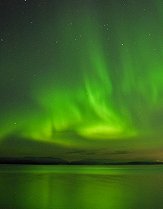
|
Aleksander
Chernucho,
Lake Imandra, Kolyskia peninsula, Russia
Sep. 4, 2008
|
#1,
#2,
#3,
#4,
more |
Photo
details: Nikon D200 iso 800 F3/5 18mm lens 30s
exposure. |
|
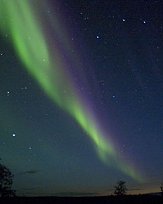
|
Yuichi Takasaka,
Yellowknife, Northwest Territories, Canada
Sep. 3, 2008 |
#1,
#2,
#3,
#4,
more |
Faint pink streaks appeared towards western sky just before 11pm. Lights danced most of the night until the sky got cloudy at 2:30am.
|
|
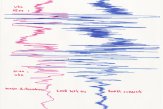
Red
trace=local magnetic field
Blue trace=ground currents
|
Rob Stammes,
Lofoten, Norway
Sep. 4, 2008 |
#1,
#2, more |
Unfortunately,
the sky was cloudy, so we couldn't see the Northern Lights,
but my monitoring equipment at the Polarlight
Center picked up vibrations in the local magnetic field
(red trace) and ground currents (blue trace) caused by those
magnetic changes. The disturbance in magnetic declination
was about 3 degrees! On my VHF radio aurora system was a
reflection directly upwards from a corona crown. This
was for sure a strong effect from a coronal hole.
|
|
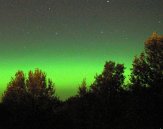
|
Stephane Levesque,
Ste Luce, Quebec, Canada
Sep. 4, 2008 |
#1 |
After
I saw your alert, I looked at my sky and saw these auroras.
Photo
details: Pentax istdl2,16mm/3,5f/1600 asa at 20
second |
|
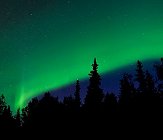

|
Bud
Kuenzli,
North Pole, Alaska
Sep. 2, 2008 |
#1,
more |
The display
lasted for almost three hours. The image is a three-exposure
panorama with a Canon EOS 1D MKII, 16-35mm, ISO800, 15 sec.
|
|
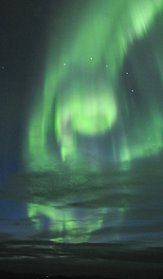
|
Lance
Parrish,
Skiland, Alaska
Sep. 2-4, 2008 |
#1,
#2, #3,
#4 |
Taken
9/2-4. Generally weak, but a short very nice display. Nikon
D3 14-24mm f2.8 - 16mm f2.8 Fisheye ISO 1600-3200 at 3-15
secs |
|
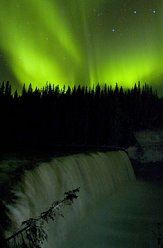
|
Yuichi Takasaka,
Lady Evelyn Falls, near Kakisa, Northwest Territories, Canada
Sep. 2, 2008 |
#1,
more |
The sky was
clear, but the auroras didn't come out until 2am (MST) night.
It was so dark I had to use flash to illuminate the falls.
Pentax K20D, 14mm lens. |
more
images: from
Martin Mc Kenna of Maghera, Co. Derry, N. Ireland; from
Gilles Boutin of St-Jean Port-Joli, Quebec, Canada |
|